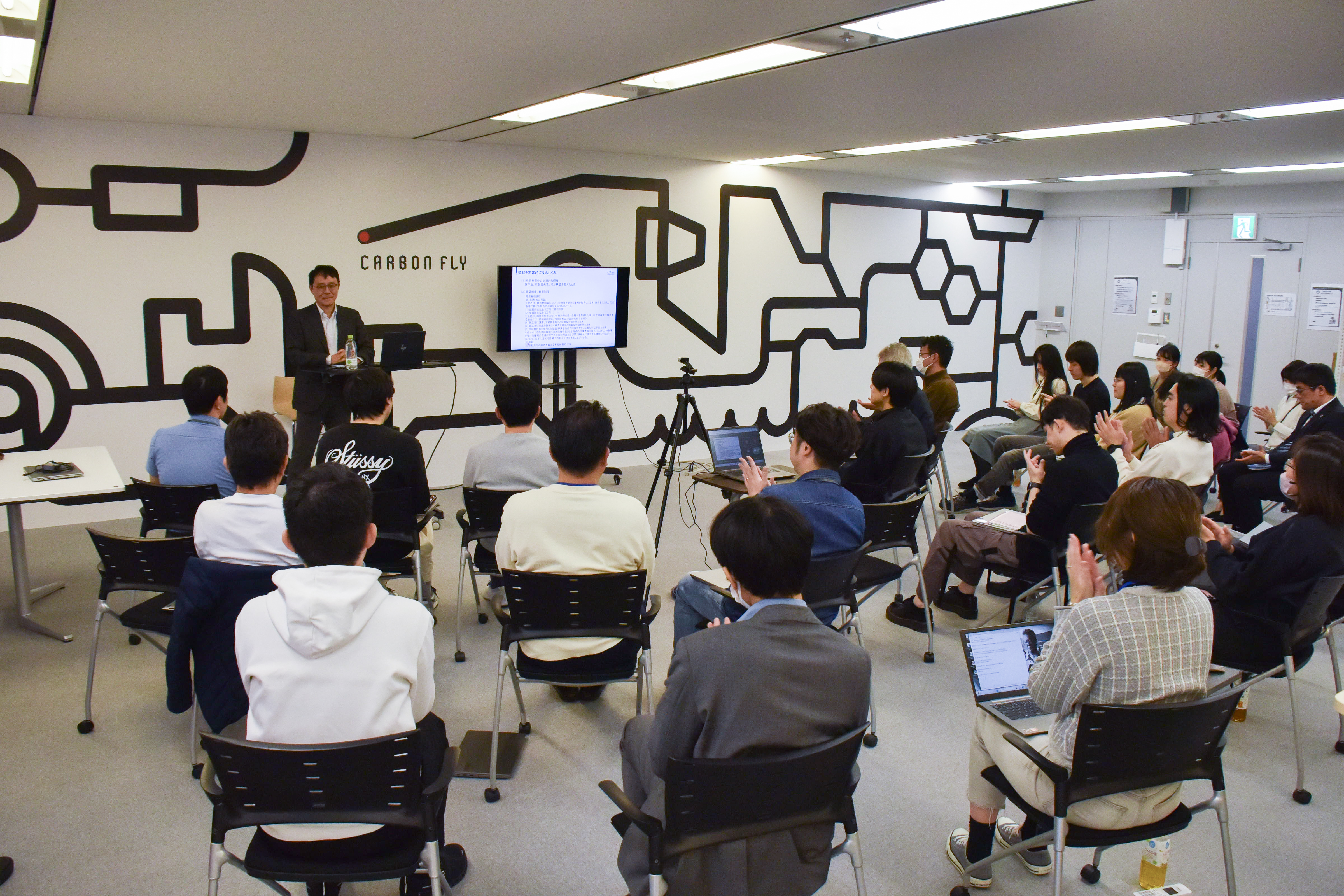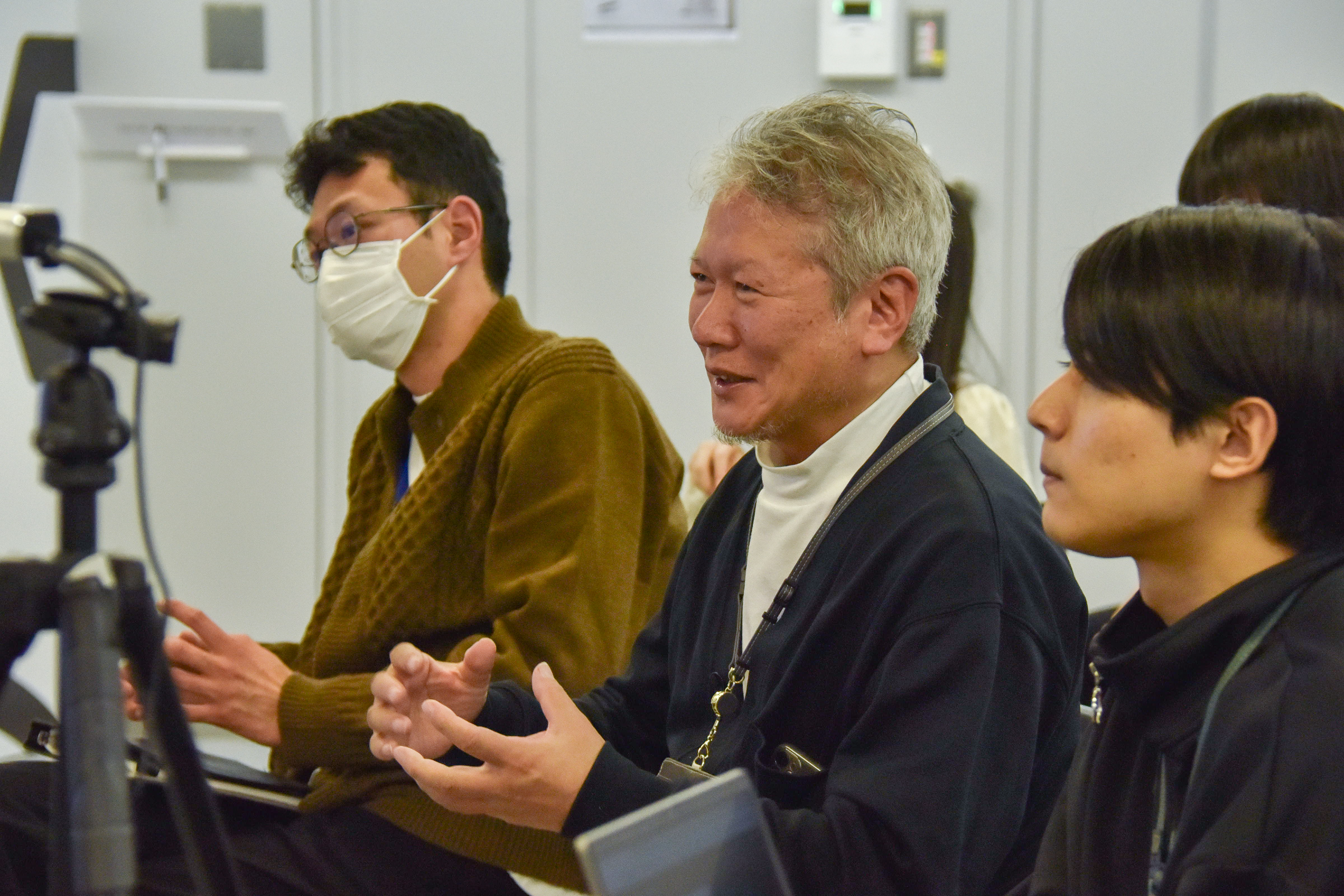To protect startup technologieswith intellectual property
CARBON FLY has entered into an advisory agreement with IP Bridge, Inc.
which specializes in intellectual property ("IP").
The firm is working with us to determine what kind of patent strategy
would be most effective in protecting our carbon nanotube technologies.
However, we have many young researchers in our company,
and some of them say that IP is somewhat difficult to get to grips with,
and that they are not sure what exactly they can do.
Mr. Yoshimura gave us an overview of what IP can do
and what kind of problems it can cause, using examples.
(This is an edited version of our internal seminar.)

Managing Director, Innovation Department
Mr. Takeo Yoshimura
-
2013 Joined IP Bridge
1996 SANYO Electric Co., Ltd. (now Panasonic Corporation)
He has overseen IP for about 20 years since he joined SANYO Electric Co., Ltd. He has been involved in IP matters such as acquisition of rights, license negotiations, patent litigations, and М&A, mainly in the field of electronic devices, and has comprehensive experience in IP practice from IP creation to monetization. Cumulative IP revenues of over $100 million have been obtained.
In IP Bridge, in addition to licensing activities, he is responsible for the innovation business, which provides IP support and investment to startups, and promotes IP strategies for many startups and small and medium-sized companies.
IPAS IPAS IP Mentor, JPO since 2018 (first year); IP Expert, Ministry of Economy, Trade and Industry INPIT
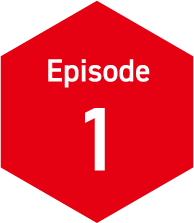 What is “Our Technology”?
What is “Our Technology”?
Q.
Could you tell us again what intellectual property is?
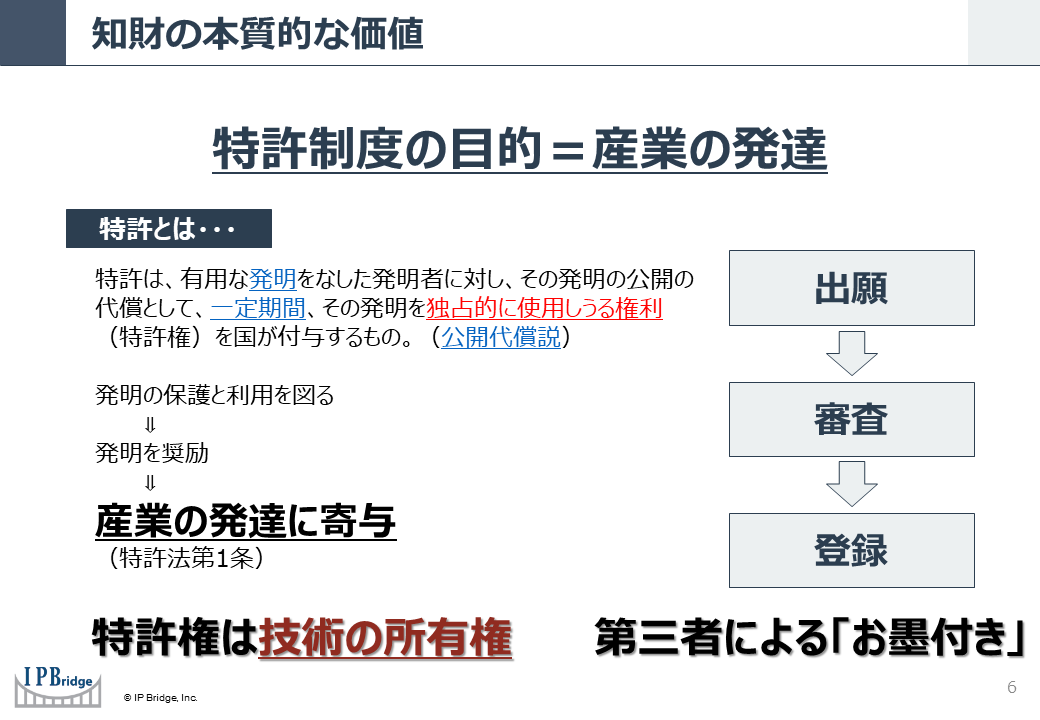
Mr. Yoshimura
First of all, only IP can claim the right to use and own technology.
You can say, "This car is mine," or "This house is mine. However,
only IP can claim ownership of technology since it’s an invisible and indistinguishable concept.
The purpose of the patent system is industrial development.
This is stated in Article 1 of the Patent Law. For example,
suppose there is a person who has developed a method for smelting a wonderful Japanese sword,
the treasured sword of the family. If he says that he will pass down this technique from one generation to the next,
but if he dies in a car accident before he passes it on, that method of refining swords would be lost to the world.
Society would lose out, and society would want the technique to be preserved in a tangible form and disclosed to the public if possible.
On the other hand, from the side of the inventor, "I've gone to the trouble of inventing something,
and I'm not going to give it away for free! So, in exchange for disclosure,
society gives them the exclusive right to use the invention for a certain period (20 years),
so please disclose as much as possible.
The patent system is roughly structured in such a way that society and the patent office control this disclosure and monopoly rights,
and there is an exchange of transfers between society and the patent office.
On the other hand, the world is full of things that the person believes are inventions,
but they are not inventions at all. For example, "It is called a warming cabinet.
There are refrigerators in the world,
but with this you can always have a hot drink!" But you can find a box with a warming function at restaurants.
To distinguish such things, a proper government agency should accept the application and ask,
"Is this really new? Is it a valuable disclosure that deserves to be granted rights?" The JPO's job is to register and administer the application,
saying, “Well, this is new, and if it is within this scope, we will approve it.”
As I have said repeatedly, a patent is a right to own technology,
and an objective third party can give a so-called "seal of approval" to your invention,
saying that it is new.
In fact, the concept of "our technology" is not as vague as it sounds.
Imitation is the first step in learning, and there is nothing wrong with imitation itself,
even though the origin of the word "learn" is said to be "imitate" in Japanese.
Let’s learn! Please be aware that only inventions that have been made into intellectual property are the exception to the rule,
and only those inventions that have been made into intellectual property are granted ownership of the technology.
It is perfectly legal to try to do something that you have heard about that has not been patented in the world without any obligation of confidentiality.
Some people misunderstand this point.
I would like you to start from the point that the fact that our company's technology or new product has been developed or that an article has been published has nothing to do with the ownership of the technology.
Only those things for which we have obtained IP rights can be said to be "our technology," and we should not really say that about anything else.
Some people say, "Well, if we have an NDA (Non-Disclosure Agreement), then it doesn't matter,
they won't copy us, right?" But this is not true. An NDA is a promise not to disclose the information to third parties,
but it does not say that they are not allowed to conduct copycat research within their company.
For example, you signed an NDA with a company, and you felt comfortable speaking your technology.
If the company has 50,000 employees, it means 50,000 employees may know your technology.
NDAs are very vague, and they usually don't have penalties. I'm not saying it's useless,
but just because you have an NDA doesn't mean you don't have to get a patent, not at all.
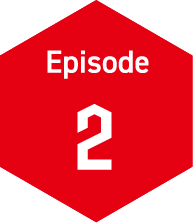 IP is a startup's admission ticket to take the stage
IP is a startup's admission ticket to take the stage
for the negotiation with major companies

Q.
In what situations is IP important in a startup?
Mr. Yoshimura
In fact, "IP is a right to monopolize, isn't it? A venture company can’t monopolize it,
and we don't have enough money. So, does it need for us?" I am often asked this question.
I think of IP for start-ups as an admission ticket to go head-to-head with large companies.
If a startup company does not have IP, they will not be taken seriously.
They will just be suckers of the technology and say goodbye. I believe that IP is an indispensable tool,
like a ticket in business.
The patent dispute between Apple and Samsung is well known, but it's not just big business vs.
big business. Smaller companies can be sued by large companies.
There was a case in which a startup smartphone game company paid a settlement after being sued by a large game company,
and the startup's stock price continued to drop for a year after being sued by the large company.
For a startup company that had not been listed that long,
this must have been more painful than the settlement.
There was also a lawsuit between startup SaaS companies.
The case ended in a bitter draw because the right holders could not prove their case,
but both startups suffered a great deal in this case as well,
after spending a considerable amount of money in court.
Another case is a bit older. A special patented PC part supplier sued his customer. The small company had invested in equipment to increase its capacity many times over to catch up with the customer's request. However, the customer suddenly told them to deliver only half quantities next year. The customer found a similar product with the same function at a lower price from another company. I thought that this was a terrible thing to do, but the supplier filed a lawsuit against their most important customer. However, as it turned out, they lost. The reason why they withdrew the lawsuit was largely due to the wording of the patent. The reason why the patent was withdrawn was largely due to the wording of the patent. However, the sued party changed a part of it and made it look like a mushroom. They argued that this was not a sphere, and their argument was accepted. If the patent had been granted for "insulating body" instead of "insulating sphere," without limiting the shape, the outcome of the trial would have been different. It is easy to say after the fact, but it is actually very difficult to write a patent application with aware of all risks.
Large companies understand the risk of infringing patents and damaging their credibility. However, from the standpoint of large companies, it is a serious problem when one company's inability to produce causes the entire production line to stop. So multi-company purchasing is a necessity. If the patent were perfect, the large company might have asked the supplier, the patent holder, to allow it to buy from the other company formally. If they could offer the license to the other company and receive royalties, they might have been able to create all three companies benefit, even if the unit price itself was lower. I believe that patent is used as a big card for negotiations. It is the much better way to use patent than a monopoly.
There are also high risks for large companies in purchasing components from companies that do not have patents. Please imagine a company buys 1.5 million parts a year for 100 yen, using "our company's technology" that is not patented, and uses them in a game console with sales of 500 billion yen. How much would the infringement amount look like to the patentee? One component is only 100 yen, but in some cases, you could take the position that the entire game machine is an infringing product. To put it another way, even a single screw used in a luxury car is an infringement, and anyone would think that it is more profitable to enforce a patent on a luxury car worth over 10 million yen than to enforce a patent on a screw costing 100 yen a piece. Therefore, large companies want to procure parts from reliable suppliers who have patents. Patents can be used in sales to differentiate the company from competitors.
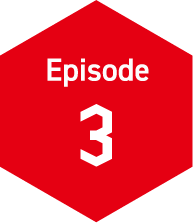 If someone else files an application first,
If someone else files an application first,
our invention will be subject to someone else's rights

Q.
Is there anything we can do to be aware of on a daily basis to avoid having an application filed without our permission?
Mr. Yoshimura
Common failures in manufacturing ventures and start-ups is the risk of introducing products and factory tours.
As I mentioned earlier, the basic concept of patent rights is to grant rights in exchange for making technology public,
so there is no benefit to society in retroactively granting rights to those who voluntarily disclose their technology before filing an application.
It is a matter of saying, "Thank you very much for making it public,
and thank you for your kindness. The Japanese patent system has remedy rule,
but it is not recommended because it may work to your disadvantage when you file an application in a foreign country.
This is what I heard from a small business consultant who lectured with me on METI's SME support program.
A small company gave a major company their factory tour with great hospitality.
5 persons came and only 3 were able to exchange business cards,
and the other 2 said they were out of business cards. Later they found out that 2 persons had come from a rival manufacturer.
As a result, the technology was taken away from them, and they showed it to someone who didn't even have an NDA.
It was seen as the fault of the small company.
I am sure that not all people are bad, but it is important not to show important things to anyone except confidential customers.
The scariest thing is that an outsider understands the technology and file a patent application as if he/she had invented it.
The examiner has no idea that you are doing this, so they will grant him/her the right.
Moreover, the fact that the application has been filed is not disclosed to the public for a year and a half after the application is filed.
So, the inventor won't know that it has been taken down for the term.
Q.
If outsider get patented first, is there really nothing we can do?
Mr. Yoshimura
There is a method called the "first use right defense.
The rule is that if you can prove that you did not apply for a patent,
but you were the first to do it, then you are the only one who is exempt from the right.
However, this is surprisingly difficult. 10 years from now, in 2033,
will you be able to prove that CARBON FLY was indeed making carbon nanotubes using this recipe in 2023? It is so difficult, isn't it?
Even if you can prove it, you can only continue to use the technology,
but it remains up to the patentee to license the same technology and earn royalties.
Please keep in mind that the strongest person is who get patented first.
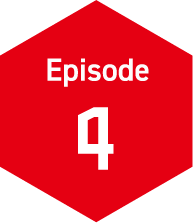 Understanding the differences between researchers,
Understanding the differences between researchers,
IP staff, and patent attorneys to create strong patents
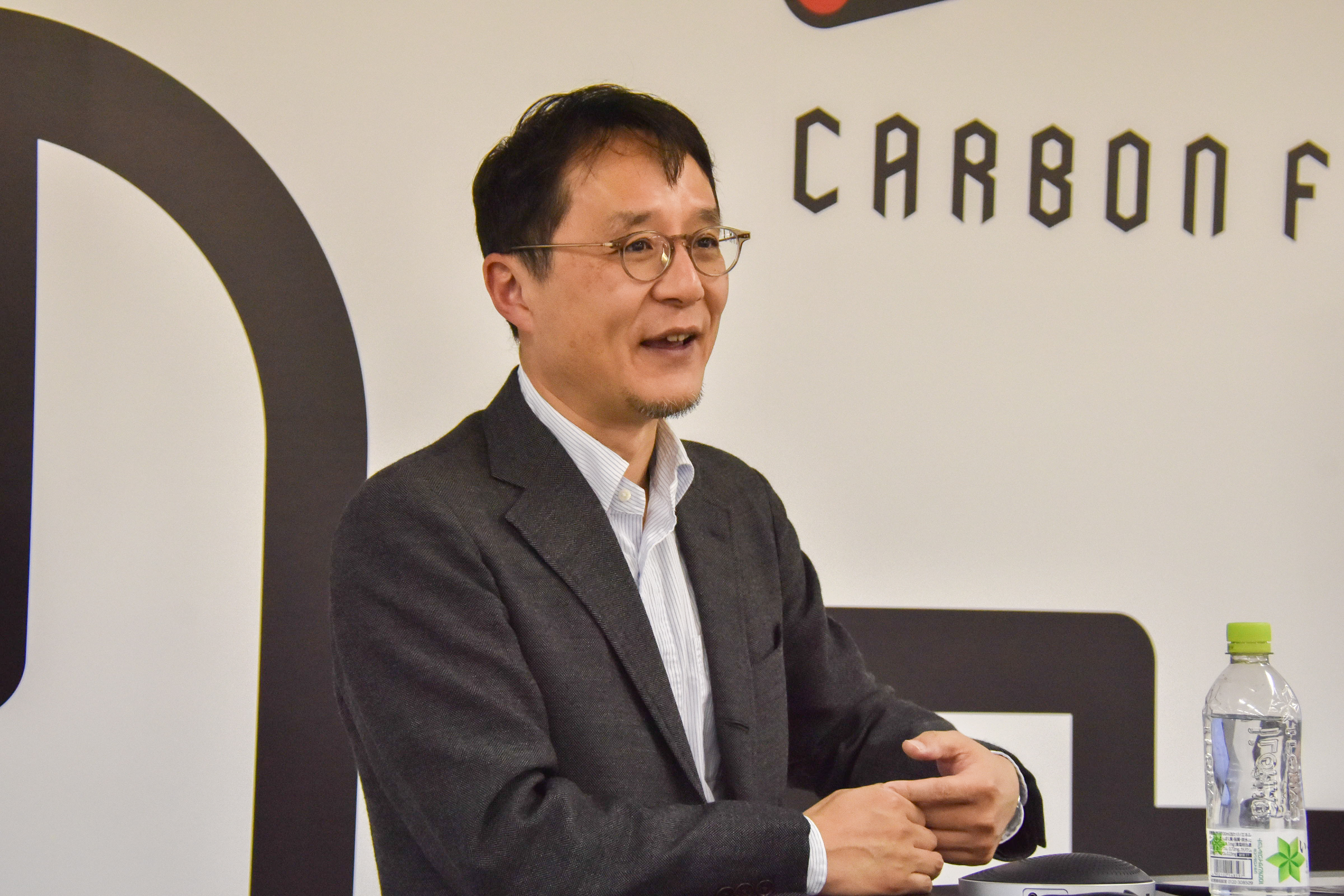
Q.
What should we prepare for a patent consultation?
Mr. Yoshimur
Please remind “Need I get patented?” before you launch new technology through laboratory tour, pitch, paper, or any other manners.
And please feel free to ask any IP staffs. Even if the researcher does not think there is enough to patent,
we may find treasures. You can prepare from there.
Many researchers search for “This is the best!” In the case of the previous example,
it is important that it be an "insulated 'sphere,'" and no other shape will do.
It is important that it be an "insulated 'sphere,'" and no other shape will do.
On the other hand, IP persons might say, "No, no, not 'insulating sphere' but 'insulating body' would be better.
The IP person would expand the concept, "Why not use wood? Why not wood? How about konjac? But konjac would probably not work because it would be buried in the spring,
and clay would probably not work either. Then, would 'insulated rigid body' work?" In this way,
we think about the broadest possible concept to realize this concept.
After thinking about it, we first file an application for "insulator," aiming for the widest possible scope, where I would be lucky if the application is approved.
However, if the examiner finds an example where clay or konjac is not allowed and rejects the application,
the applicant will say, "Okay, I'll change it to 'insulating rigid body.
" Even if we receive an rejection, we are company employees. We can say, "Sorry, boss, we got a rejection! I'll do my best next time!”
On the other hand, patent attorney’s firms work with fee for each case.
The important ability is to ensure that customers obtain their rights.
They do not want to receive rejection with reckless claims and ruin their like "I did as he said and was rejected”.
They will say "I recommend that you go for the 'insulated rigid body'.
” However, they often suggest good claims with a point of view that we have not come up with in-house because they have wide experiences from writing patents for various companies.
Researchers may think IP staffs are troublesome to hear such outlandish questions like "Why can't you use konjac?"
but we have ideas that can be conceived from different perspectives.
Please make good use of outside patent attorneys’ firms as well,
so that you can create strong patents.
In a previous job, I found four inventions from a presentation document.
And I was told that the presentation would be next week.
I wrote up four cases and filed the application in a few days with half-crying.
What I want to say is, please consult with us in plenty of time! (lol)
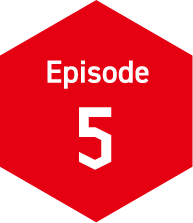 Should you file or hide?
Should you file or hide?
Consider the risks and costs involved.
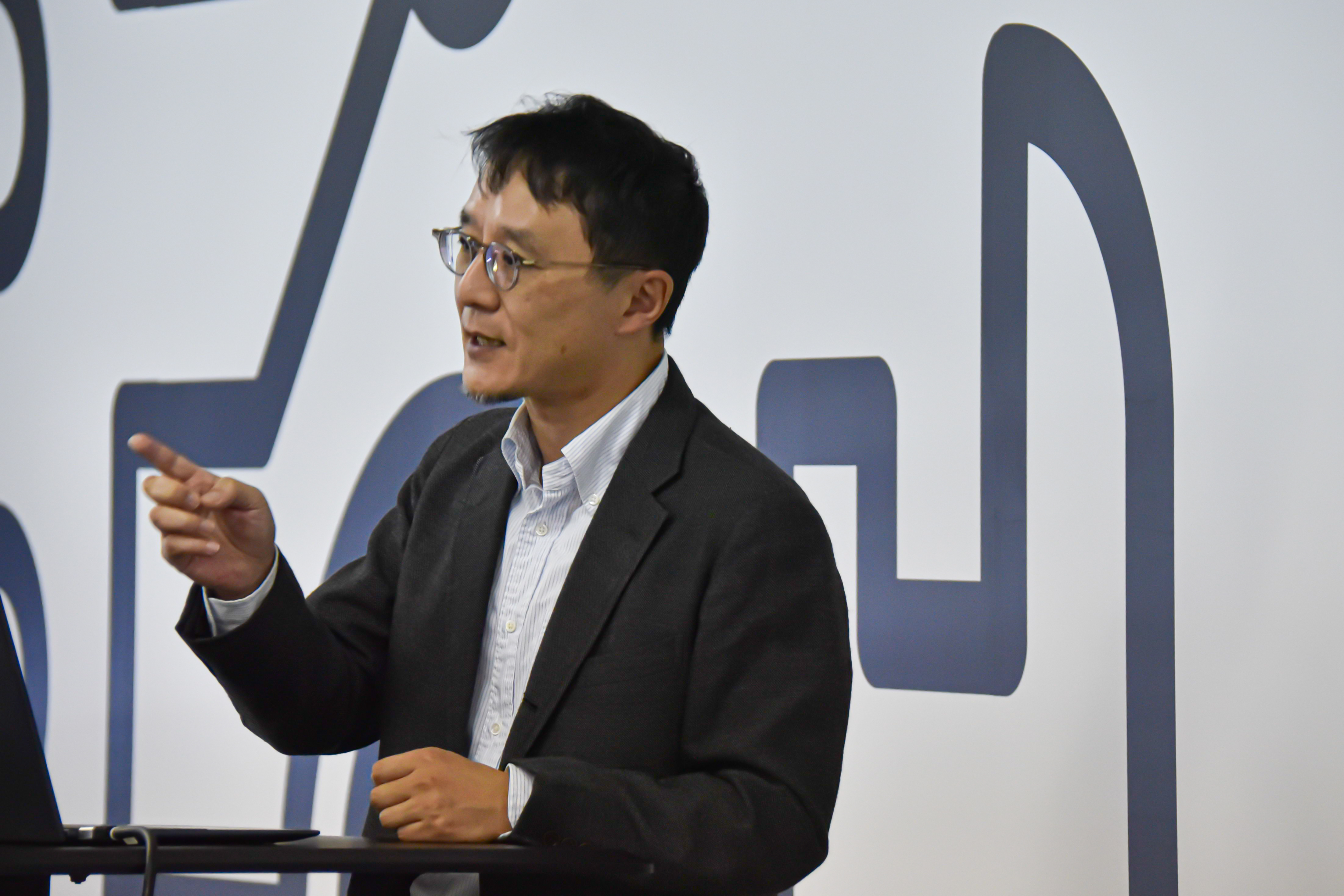
Q.
Are there any disadvantages to obtaining a patent?
Mr. Yoshimura
There are two major disadvantages: first, once an application is filed, it is automatically published a year and a half later. The most famous companies that have adopted the “hide” strategy are Coca-Cola and Kentucky Fried Chicken. Maybe it's hard to find anyone in the world who hasn't heard of Coca-Cola, but nevertheless, no one knows the recipe for Coca-Cola. No matter how much research Pepsi-Cola has done, they still can't make the same thing as Coca-Cola. They shouldn't be filing. If they had filed, the recipe would have been published a year and a half later, and the patent rights would have expired long ago, since the patent is for 20 years. But thanks to the choice not to publish it, Coca-Cola is still able to remain the one and only drink. But Coca-Cola's strategy is a tremendous backwater. As mentioned earlier, if another company were to file an application with the patent office claiming to have developed a new recipe, it would be approved. Analytical technology has advanced so much in recent years that it is important to consider the possibility that most things will be discovered.
Another disadvantage is the cost. The official fees paid to the patent office are not much. Also, the fees for patent attorneys in Japan are about the lowest in the world. In a large patent attorney's office, the fees are relatively higher, but in a one-person office, there is a risk that the deadline management. In the case of a large company with a solid IP department, there is no problem at all in managing deadlines by themselves and only asking a private firm with whom they feel comfortable to do the footwork to take care of the procedures. On the other hand, for small and medium-sized companies that have a difficult time establishing an IP system, I personally recommend using major firms to prevent from risks, even if they are a bit expensive.
The most expensive part is the translation of foreign applications.
Since it is a legal document and full of technical terms, it is impossible to translate it using Google Translate.
Since the scope of rights is indicated in words, it is necessary to use translators with specialized skills in each language, which is inevitably expensive.
The other cost is the cost of maintaining the patent rights.
Therefore, it is necessary to strategically consider how many applications need to be taken and for what purpose,
and to be selective and focused by submitting those that should be filed and concealing those technologies that should be hidden.
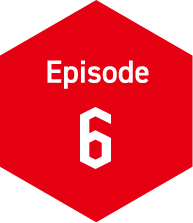 IP strategy involving patents
IP strategy involving patents
and trademarks with a view to IPO

Q.
We are aiming for an IPO after working with IP Bridge. What should we consider?
Mr. Yoshimura
IP can also be a big card for fundraising: for VCs and financial institutions.
to give money, it is of course important that the company grows and shows promise of becoming 5x or 10x more valuable,
but it is also important to lower the risk of losing money for investors.
In the extreme, even if our company is in trouble, this patent can be sold.
We can say, "You won't lose money, please invest with confidence.”
As you work toward an IPO, you should steadily acquire patents as your company stages.
Eventually, you will need to brand your company and products.
This is where intellectual property in the form of trademarks can be useful.
This is the exclusive right to use something such as a company logo or product naming.
You have probably seen the ® mark. If you continue to pay for it,
you can keep the right to use it indefinitely,
even beyond the 20-year period when the patent expires.
Coca-Cola also registered their trademark. It is a way to protect the name Coca-Cola,
even if they made a product that tasted the same, they would not be able to sell it under the name Coca-Cola.
When you search the keyword "carbon nanotube" on the Patent Information Platform,
you will find more than 15,000 applications.
Semiconductor, energy, automobile, chemical, electricity...
famous companies in various fields are lined up.
This is proof that carbon nanotubes are attracting a great deal of attention in various industries,
and at the same time, it means that you are also taking on the challenge of being part of an industry where there is a crowd of companies.
In order to compete with major companies on the same stage,
it is essential to build an appropriate IP strategy.
Build your business with patents, market it, and grow it into a big business!
editorial postscript
We thought we understood the importance of intellectual property to our core R&D activities,
but when we were confronted with specific examples,
it was truly chilling. It seems that many of our researchers felt the same sense of crisis,
we received several inquiries about the internal steps for patent applications after the lecture.
The lecture effected immediately. Just at this time,
we has formed a capital and business alliance with IP Bridge.
Although our IP activities are still in their infancy,
they saw the potential in our technology and provided us with funding.
As mentioned in the lecture,
we will strengthen our IP activities while making good use of the respective positions and perspectives of our in-house researchers and IP department staffs, IP Bridge, and patent attorney firms.
Click here for the press release regarding the capital and business alliance with IP Bridge, Inc.






